Living on our off-grid houseboat makes us more connected, not less
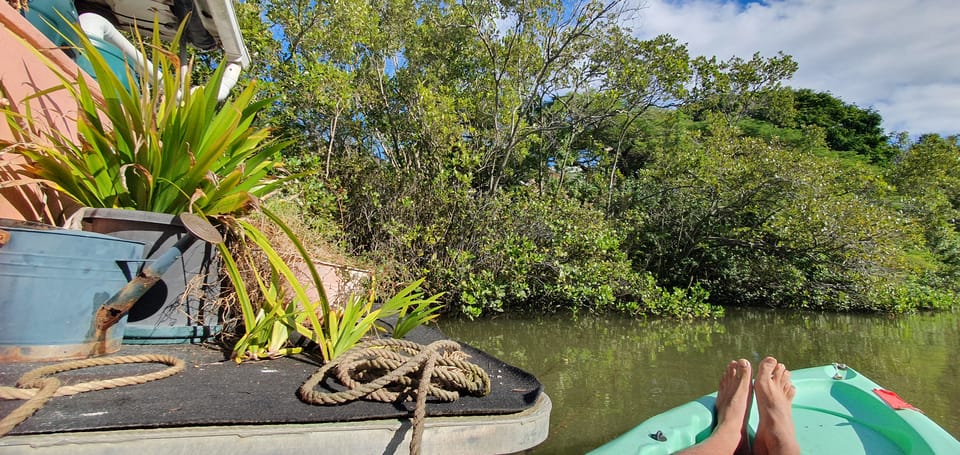
I don’t like the term ‘off-grid.’
Or at least, I don’t like how the term is often used, evoking the myth of ‘self-sufficiency,’ as though it’s possible to completely disconnect from the world around you.
But people keep asking me what it’s like to live on our off-grid houseboat. So I thought I’d paint a picture to show how despite not being connected to water, sewerage or electricity grids, this style of housing has actually made me feel much more connected to the world around me...
(I’m certainly not suggesting that everyone can or should live on boats, but I do think learning about different kinds of housing and ways of living helps us imagine trajectories of transformation that can get us out of the mess we’re all currently in.)
My partner Anna and I first moved onto our houseboat in 2017. We bought it second-hand off Gumtree for about $30k – much cheaper and more sustainable than constructing a new home from new materials (we’ve since spent another $7000 on improvements like solar panels, batteries, a new 12-volt fridge etc).
It was a lot of money to drop on something that will gradually decay and depreciate, but not having to pay rent has freed up more of our time and money for other creative and community projects.
A few factors contributed to our move from rental sharehouses onto the boat:
- wanting to experiment with more sustainable ways of living
- the related desire for more autonomy over how we adapt and decorate our space
- rising housing costs on land, and the frustrating uncertainty of tenant life where you’re continually wondering whether your lease will be renewed
- and of course, the romance of living in such a quirky, beautiful space that feels so far removed from heavily-concreted urban landscapes, even though we’re just a 15-minute bike ride from the city centre
We’ve lived on the boat for 7 years now. It’s an 8m-long, twin-hull bay cruiser. We named it ‘Afterglow.’
Initially, we planned to move around in it regularly, hopping from one location to another. But the old engine proved unreliable. In our first few years, we had a couple of stressful misadventures with it cutting out halfway up the river. So these days we usually keep it nestled beside the mangroves on one of Maiwar's tributaries.
Moving less often allowed us to stay more connected to place – to our particular stretch of the creek and the surrounding neighbourhood. We’ve gotten to know heaps of our neighbours – both on land and on other boats – and been involved in local projects like revegetating the creek bank and helping start a community garden around the corner. I imagine boaties who move around more frequently might miss out on that degree of local connection.
Cycles within cycles
So much has happened in the world beyond the creek since we moved here, but boat life has its own rhythms that most land-dwellers aren’t attuned to. Living on Afterglow, I perceive aspects of this place I would never have noticed if I was looking down from the top of the creek bank.
The daily cycling of the tides prompts us to observe our ecosystem from different angles. As the water level drops, the dripping mangrove roots are exposed, along with a muddy liminal zone inhabited by tiny crabs sifting through the silt. When it rises again, driftwood heads inland (against the seaward flow of the creek) and our outlook changes. During the highest tides, if we climb onto the cabin roof we have a pretty decent view across the tops of the tallest mangroves to the surrounding suburban neighbourhood, while at other times (when the tide is lower), the mangroves close in above us.
The deeper fortnightly rhythm of the neap tides and spring tides also compels an attentiveness to the passage of time. Some weeks, the tides aren’t as high or as low, but when the moon is full, we know the end of our makeshift jetty will be dropping underwater once or twice a day.
All else being equal, we seem to be happier when the tide is up. I don’t know why this is. Perhaps the elevation just gives us a more favourable perspective of the world.
When the landward end of the often-wobbly gang plank has been underwater at high tides, and clouded skies have prevented the sun drying it out through the low tide, the thin muddy coating is slippery and precarious. At the lowest tides, the gang plank slopes sharply down an almost 2-metre drop, and we sometimes have to climb with our hands (it’s a wonder we’ve never fallen in). Decisions about when to come home in the evenings and the timing of shopping and laundromat trips are often shaped by how steep the gangplank will be. The tides insist we pay attention to them.
Seasons are also more noticeable on the creek than elsewhere in the city.
Warm weather heralds swarms of relentless midges that are small enough to climb through the tightest fly screens, forcing us to close all the doors and windows so that the boat becomes a stifling greenhouse. A $20 12-volt ceiling fan now ranks among our most valued and useful possessions.
In winter, shorter days and more cloud cover can mean our solar panels don’t catch as much sun, so we have to start watching our battery levels closely.
We only have about 400 litres of rainwater storage, so in dry spells, we run low on water and our cold showers get even shorter. In wetter months, the tanks overflow if we don’t disconnect the downpipe.
There are some cycles we still don't fully understand. On certain nights, usually (but not exclusively) during the colder, drier months, the creek is enchanted by vivid bioluminescence – electric blue sparks and fireworks in the water, caused by the build-up of cyanobacteria. I've learned to treat the bioluminescence as a reminder that it hasn't been raining as much, so I should watch my water usage more carefully.
The material impact of all these tidal and seasonal cycles has definitely changed my relationship to time. We live in the middle of an increasingly fast-paced city, but the boat invites us – forces us – to slow down and pay more attention to our immediate environment.
Surrounded by non-human neighbours
Compared to life in a conventional house, what most of us think of as ‘nature’ is so much closer and more present on the boat. On the creek bank, a diverse mix of insects and small and large lizards (including blue-tongues and eastern water dragons) all slither away hurriedly when we climb up from the boat or when bush turkeys wander through the scrub. Dragon flies, spiders, cicadas, stick insects, myriad beetle species – you can find them all among the mangroves.
There’s also an entire aquatic ecosystem growing on our hull. If you put your ear to the deck you can hear the crackle of fish nibbling at the seaweed and algae. I’m always within a couple metres of a dozen fish species – most notably the large catfish who hang out on the starboard side to scavenge occasional offerings of kitchen scraps.
In summer, the mullet grow fat, and make loud splashes when they jump high out of the water. Late one night, we were woken by a wet, thunking clamour. Bleary-eyed, half-dreaming, we staggered out the back door to find a huge fish flopping in one of the kayaks. We're vegetarian, so I reverently helped it back into the water.
Our nearest boat neighbours once caught a large stingray while fishing near the mangroves (they released it). And my partner spotted a small bull shark once, but I don’t think the larger ones enter the creek very often.
Both brushtails and ringtails visit regularly. They jump onto the boat from over-hanging mangrove branches, destroying whole crops of veggie seedlings in an hour or two, rattling and skittling empty food tins if we leave them outside on the deck overnight. Sometimes they’re assisted in their carnage by small mice or larger rats. In our first year, I tried to catch these in cage traps and relocate them to the mangroves down by the private school. Now I've just giving up growing the plants they like eating.
@jonnosri Ringtail possum has taken up residence in the gutter that supplies our drinking water... Not ideal, but very cute
♬ original sound - Jonathan Sriranganathan
On several occasions, I’ve seen a kuril – a native water rat – scrabbling through the mangroves along the waterline. Track marks suggest they come through more often, but they’re shy and wily creatures. Recently, one of them has been swimming onto the boat very late at night to investigate the recycling we sometimes leave on the back deck.
@jonnosri We get lots of interesting visitors to our houseboat This is a kuril (a.k.a. rakali) - the native water rat. One Indigenous name for West End is Kurilpa (place of the water rat)
♬ original sound - Jonathan Sriranganathan
Afterglow also gets daily visits from willie wagtails, superb fairywrens, and a pair of spotted doves who build nests in various sheltered spots around the boat despite us gently discouraging them (because we don’t want too much bird poo in our rainwater supply).
We also see sacred kingfishers fairly often. Once a larger kingfisher flew right in the back door, through the cabin, and smacked into the big glass windows at the front. He seemed fine, but ushering him out again was an adventure in itself.
Our stretch of the creek is also a regular hunting ground for many different water birds, particularly eastern great egrets and lesser egrets, pied cormorants, little black cormorants, striated herons and of course white ibis (the local ibis who nest and forage along the creek are far more shy of humans than their identical cousins that live elsewhere around the inner-city). Very occasionally, even a pelican ventures up the creek.
A flock of ducks trawls the waters regularly, scabbing food from various households (both land-based and houseboats) and sifting diligently through the mud on the creek banks. They’re an introduced species – I think the common name is ‘American Pekin’ – and their white plumage seems outlandishly clean in the muddy creek. Their tiny yellow ducklings are among the cutest life-forms on the water.
These ducks clearly aren’t native to the creek but their population seems reasonably balanced with the wider ecosystem
A family of geese (formerly-domesticated Europeans) also live a few hundred metres up the waterway, but they never seem to come as far down as our boat.
On the next bend of the creek, past the geese family, a large colony of flying foxes roost in the mangroves. At sunset, we watch hundreds of them taking to the air, spreading out across the suburbs in search of food.
But my favourite visitor was the carpet python who we found one day, coiled up in a pot plant just outside the kitchen door (they presumably climbed aboard when the tide was at the right height to provide a direct route from the mangrove branches to the boat railing). They seemed so small and compact when at rest in the little pot, yet so long when they emerged after dark and slithered along the railing to the front deck, where I think they were hunting a mouse that had been raiding some of the herb pots.
Each night, the python hung out in the small chilli bush on the front deck, right where I suspected a mouse had been nibbling seedlings recently
I know I sound like a cliche hippie when I say this, but living so close to so many other creatures is a constant reminder of the broader web of life we’re all part of. I’ve learned the names of many more local birds and plants since moving onto the boat, and have come to more deeply appreciate the inter-dependence of different species within the ecosystem.
Conventional Australian houses and apartments often shut out other species and keep non-human neighbours as far away as possible, whereas on our home, they’re much closer and easier to spot. This is partly because of the specific location of our boat – anchored beside the mangroves on a winding riparian wildlife corridor, as opposed to moored on a ‘proper’ jetty in a well-ordered marina. And it’s partly just because the ‘inside’ part of our home is so small.
Compact home, expansive life
Our houseboat’s entire cabin is just 5 metres long and 2.7 metres wide. The low ceilings are barely 1.9 metres high – only a few centimetres above my head. The entire boat is just over 8 metres long all up, so outside the cabin, the front and rear decks extend for another metre or two, and are crowded with pot plants, large compost tubs, 400 litres of water tanks, a rickety shoe rack, and a few gardening tools.
The roof of our houseboat cabin (which we call the top deck) is partly enclosed by a bimini, and partly sheltered by solar panels on a makeshift wooden frame I built, offering some extra roofed outdoor space, which we use like a balcony in the cooler months when the midges aren’t too bad. Occasionally we hold joyful candlelit dinner parties with 8 or 10 or sometimes more friends crammed onto this little rooftop, scurrying up and down the ladder to shuttle food and drinks to and from the kitchen.
This is the home we inhabit: a 13.5m2 indoor space where we sleep, bathe, relax, prepare and eat food, store most of our possessions, and sometimes entertain guests. Our bed is less than 1.3m wide, but roomy enough for both of us. If needed, the kitchen table and seats can fold down as a second similar-sized guest bed.
Ours is a particularly tiny home, significantly smaller than most tiny houses on wheels that are gradually appearing in Brisbane backyards, which usually have an indoor floor space of 20m2 to 30m2 (I'm told that's actually bigger than the average inner-city home in many Asian cities).
Everything is closer together on the boat. The kitchen compost tub is only a metre or so from the larger compost bin out on the front deck, which is right beside the pot plants it replenishes periodically with rich new soil. The kitchen is only two metres from the bed, which encourages snacking and regular cups of tea.
In other homes, I’ve always made tea with teabags because I never seemed to have time for the extra steps and hassle of loose-leaf. But on the boat, we boil water on the stove and make tea in a pot. The damp leaves sitting in the teapot from the day before go straight into the compost or one of the pot plants outside the kitchen door. I’m more attentive now to the ritual of transferring water from tank to tap to kettle, kettle to teapot, teapot to mug.
I have other ritual-routines involving water. Dirty dishwater from oily pots goes into a rudimentary biolfiltration system which used to be someone’s cylindrical outdoor drinks cooler and is now filled with layers of gravel and sand. (Slightly) Cleaner water trickles out a hole at the bottom of the filter-esky into a bowl that I then use to water the other plants.
@jonnosri For anyone who's interested, this is how we avoid releasing oily greywater from our kitchen sink into the creek... #houseboatlife #green #greywater ♬ original sound - Jonathan Sriranganathan
Boat life definitely makes me more conscious of what I consume, and where my waste goes. We compost our food scraps, tissues, most cardboard packaging, and even our poo. Sunflowers now grow out of soil that used to be our shit.
The relatively small amount of non-compostable waste we produce mostly ends up in one of our neighbours’ residential bins left out on the street before bin collection day.
Gardening on the boat is a genuine challenge. In addition to the above-mentioned nocturnal raiders, and extended periods where water is in short supply, the salt is a ruthless adversary. In the space of only a few weeks, young, healthy-looking plants will abruptly stop producing new shoots, and their leaves turn brown and drop off one by one. This seems to happen more often on the starboard side, where the pot plants are partially under the drip line of the mangroves (the mangroves survive the salty creek environment in part by exuding salt on their leaves, which rain then washes onto our boat and the pot plants).
Overnight, salty air also condenses on the railings and roof of the boat itself, with salt crystals crusting along surfaces, dense enough to harvest if you didn’t mind the grit.
Living together in such a small home has taught Anna and me a lot about communication – about clearly articulating when we need space to ourselves and when we want to be closer to each other. I imagine some couples would’ve struggled a lot more going through covid lockdowns and quarantines in a cabin of just 13.5m2, but I think because we were already accustomed to sharing such a compact space, we were better prepared to handle the challenges (and of course, lockdowns are much more manageable when you can step off your back deck straight into a kayak to go for a paddle).
What the heck does ‘off-grid’ even mean?
Reticulated sewer systems – used in almost every major city around the world – are resource-intensive to construct and maintain, and pretty unsustainable when you think about it. Brisbanites expend a lot of resources treating river water to a drinkable standard. Then we use a large proportion of that treated drinking water simply to flush our urine and poo through long networks of underground pipes (in a hilly city like Brissie, this is aided by fossil fuel-powered pump stations to move the sewage uphill). At the treatment plants, we use more energy and resources to separate out the contaminants and again treat the liquid to a standard that’s almost drinkable. Then we pump it out to sea.
In contrast, on our houseboat, our waste is converted straight back into soil that we use locally. Composting humanure doesn’t need much space, and once your system is set up, the only work you have to do regularly is empty your toilet receptacle into a larger compost tub, which takes me about 5 minutes per month on average, and is no less sanitary than changing a baby’s nappy.
Meanwhile, electricity for our fridge, lights, radio, fan, phones and laptops comes from the sun via 900 watts' worth of solar panels, and our water tanks are filled by the rain (with the help of a $30 first flush diverter). While I do plan to switch over to an electric stove when our current cooker carks it, for the moment we still rely on refillable gas canisters for cooking.
People often refer to this kind of living as ‘off-grid,' however it would be very misleading to pretend we aren’t intimately connected with wider society.
When deployed unthinkingly, that term ‘off-grid’ can do a lot of hidden work to reinforce capitalist individualism and the myth of ‘every person for themselves’ self-sufficiency. But no-one is truly independent of the world around them. Living on our boat, we still rely primarily on industrial agriculture and capitalist supply chains for our food, and for the technologies that make boat life comfortable.
Our solar panels, deep cycle batteries, 12-volt fridge, fans etc. are all products of a globalised, hyper-connected world.
And of course our life on the boat is also predicated on a moderate climate and healthy water cycles – on clean air and predictable temperatures. We have more long-term stability and security of tenure living on this houseboat, anchored beside the mangroves (with our little informal jetty and rickety gang plank) than we did as renters on land. But if a major cyclone ever hit Brisbane, combining high winds with heavy rainfall, fast-flowing water and flash flooding, there’s a decent chance we’d be washed off our moorings.
We are all forever inextricably connected to the world around us. You can’t get ‘off-grid’ from the ecosystem.
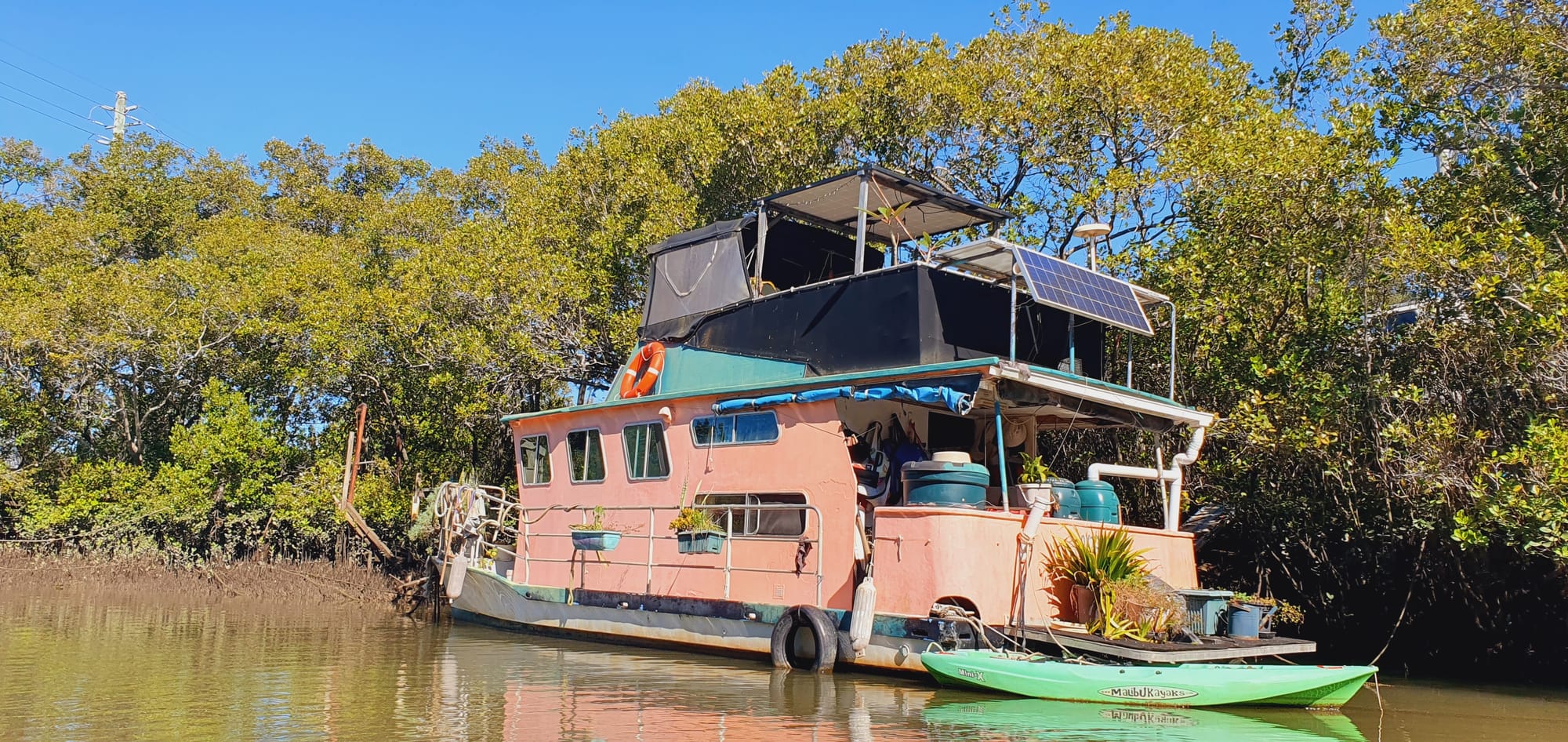
No, I don’t think this is a scaleable housing solution
Living on Afterglow for the past seven years has increased my interest in what might be considered ‘fringe’ or unorthodox housing responses to global warming, mass displacement of refugees and the slow collapse of neoliberal capitalism. If Anna and I (who both lead very busy lives beyond the boat) can manage to live in such a small space, relying on solar power, rainwater collection, and composting our own poo, couldn’t more people learn to do the same?
Having said that, I don’t think houseboat living is for everyone, and I don’t think anyone should waste time advocating it as a major solution to the housing crisis. New houseboats are a lot more difficult to build than similarly-sized tiny houses on trailers, and most older liveaboards are not very accessible for people with impaired mobility, even if you do have access to a decent jetty. Boat life can be a precarious existence, particularly in an increasingly erratic climate, whereas compact living on land is simpler and more easily scalable to house larger populations.
Life in a small home is much nicer if you have close access to nature like we do. It also helps to have plenty of third spaces nearby where we can socialise or just spend part of our day – parks and cafes within easy walking distance… libraries, galleries and music venues within a short bike ride…
This is one of the key ingredients that proponents of high-density living often gloss over. If we want people to live in smaller homes – whether that’s tiny houses or highrise apartments – we need to ensure they have easy local access to decent community facilities and large enough green spaces. Brisbane City Council consistently fails in this respect.
Anna and I do want to move off our boat at some point so that we’re less vulnerable to floods and severe storms, and have enough room to comfortably host guests or accommodate family members. A 25m2 dwelling (in a location where we don’t worry quite so much about climate disasters) would probably be enough for us. But right now, we can’t really afford to buy anywhere on land in our neighbourhood.
For others who are thinking about living on the water, there are plenty of comprehensive resources online you can check out, but I do want to highlight that liveaboards often require maintenance that’s hard to outsource to tradies, which you'll have to find time for. We managed to mostly keep up with these maintenance requirements even while I was working a more-than-full-time job as a city councillor, and while Anna was completing her PhD and holding down multiple intensive volunteer roles. But we still have a few cabin roof leaks that we never quite get around to finding and fixing.
I’ve learned to do my own 12-volt electrical wiring on the boat, as well as patching cracks in the fibreglass hull and deck, periodically replacing components of our water pumps, and fine-tuning our stormwater system so it collects enough rainwater without too much possum poo or salty leaf litter getting into the drinking supply.
There’s always more work to be done, but at least we know the boat is ours, and that we can live on it for as long as we want, without fear of rent hikes and evictions. Living in a tiny off-grid home on land would be even easier.
There’s lots more to be said about how boat life puts you in closer relationship with other boaties, and the less-regulated nature of Brisbane’s waterways compared to public spaces on land (I'll save that for another article).
We’ve learned a lot from this long-running experiment in compact, sustainable living. If nothing else, it’s a potent reminder that the two most common dwelling styles in Brisbane – fixed, resource-intensive houses and apartments – are not the only possibilities for accommodating people in our city.
Importantly, our experiences show that it’s possible to live happy, healthy lives without directly depending on centrally-administered power, water and sewerage networks. Connecting to these grids often represents a major component of the cost of new housing construction in Queensland, particularly in locations further way from existing urban infrastructure. But it turns out that living with off-grid systems doesn’t require much extra investment of time or energy, or have a significant impact on other aspects of your life.
The takeaway here is that unplugging from some systems can make you more conscious of other ones.
Many of us move through life with only a passing awareness of our non-human neighbours and climactic fluctuations, mostly oblivious to the broader currents that shape our lives, and how we might shape them in turn. We're taught that there are only a limited number of ways to exist in the world, and to restrict our aspirations to a narrow suite of possibilities.
But what if we all started to imagine living a little differently?
Thanks for reading! If you want more of this sort of content, paid subscriptions help me find the time to write more often. Follow the link above.
I've avoided including many photos with this article, partly to protect our privacy and partly because I just haven't made time to take any good shots lately. If a few more readers sign up for a $1/week subscription, I'll take that as a sign to come back to this piece to add some more images.
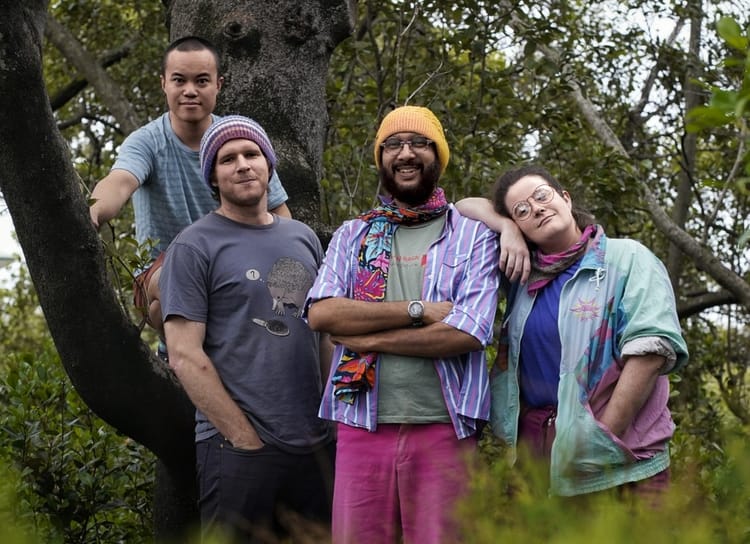

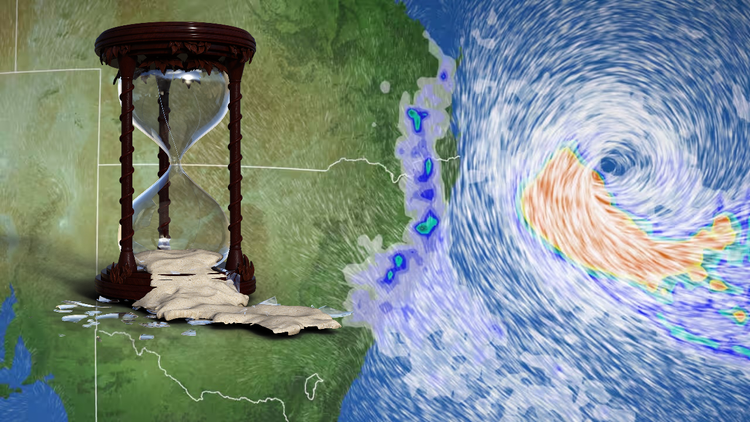
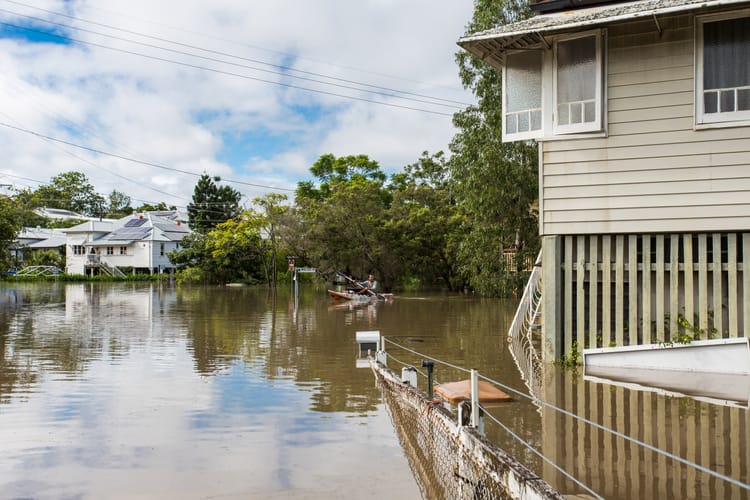
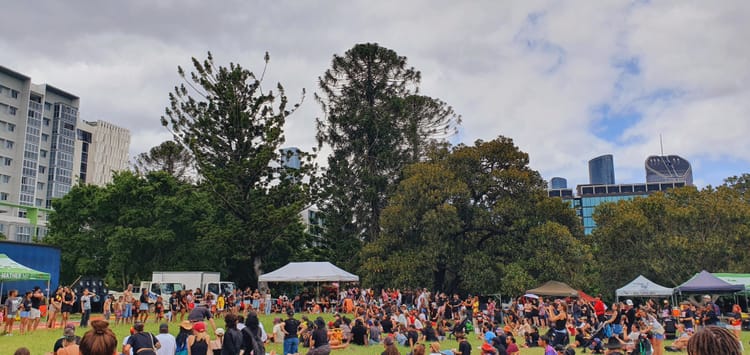
Member discussion